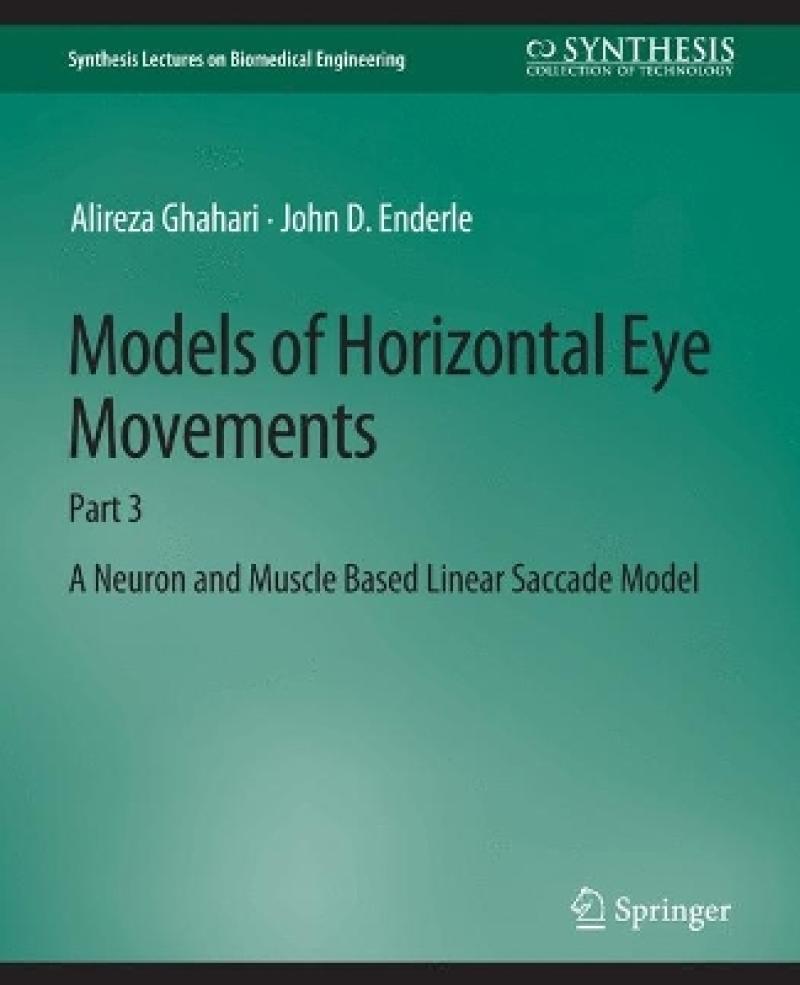There are five different types of eye movements: saccades, smooth pursuit, vestibular ocular eye movements, optokinetic eye movements, and vergence eye movements. The purpose of this book series is focused primarily on mathematical models of the horizontal saccadic eye movement system and the smooth pursuit system, rather than on how visual information is processed. A saccade is a fast eye movement used to acquire a target by placing the image of the target on the fovea. Smooth pursuit is a slow eye movement used to track a target as it moves by keeping the target on the fovea. The vestibular ocular movement is used to keep the eyes on a target during brief head movements. The optokinetic eye movement is a combination of saccadic and slow eye movements that keeps a full-field image stable on the retina during sustained head rotation. Each of these movements is a conjugate eye movement, that is, movements of both eyes together driven by a common neural source. A vergence movement is a non-conjugate eye movement allowing the eyes to track targets as they come closer or farther away. In Part 1, early models of saccades and smooth pursuit are presented. A number of oculomotor plant models are described therein beginning with the Westheimer model published in 1954, and up through our 1995 model involving a 4th-order oculomotor plant model. In Part 2, a 2009 version of a state-of-the-art model is presented for horizontal saccades that is 3rd-order and linear, and controlled by a physiologically based time-optimal neural network. In this book, a multiscale model of the saccade system is presented, focusing on the neural network. Chapter 1 summarizes a whole muscle model of the oculomotor plant based on the 2009 3rd-order and linear, and controlled by a physiologically based time-optimal neural network. Chapter 2 presents a neural network model of biophysical neurons in the midbrain for controlling oculomotor muscles during horizontal human saccades. To investigate horizontal saccade dynamics, a neural circuitry, including omnipause neuron, premotor excitatory and inhibitory burst neurons, long lead burst neuron, tonic neuron, interneuron, abducens nucleus, and oculomotor nucleus, is developed. A generic neuron model serves as the basis to match the characteristics of each type of neuron in the neural network. We wish to express our thanks to William Pruehsner for drawing many of the illustrations in this book. Table of Contents: Acknowledgments / 2009 Linear Homeomorphic Saccadic Eye Movement Model / A Neuron-Based Time-Optimal Controller of Horizontal Saccadic Eye Movements and Glissades / References / Authors' Biographies
Les mer
There are five different types of eye movements: saccades, smooth pursuit, vestibular ocular eye movements, optokinetic eye movements, and vergence eye movements.
Acknowledgments.- 2009 Linear Homeomorphic Saccadic Eye Movement Model.- A Neuron-Based Time-Optimal Controller of Horizontal Saccadic Eye Movements and Glissades.- References.- Authors' Biographies .
GPSR Compliance
The European Union's (EU) General Product Safety Regulation (GPSR) is a set of rules that requires consumer products to be safe and our obligations to ensure this.
If you have any concerns about our products you can contact us on ProductSafety@springernature.com.
In case Publisher is established outside the EU, the EU authorized representative is:
Springer Nature Customer Service Center GmbH
Europaplatz 3
69115 Heidelberg, Germany
ProductSafety@springernature.com
Les mer
Produktdetaljer
ISBN
9783031005336
Publisert
2014-10-17
Utgiver
Vendor
Springer International Publishing AG
Høyde
235 mm
Bredde
191 mm
Aldersnivå
Professional/practitioner, P, 06
Språk
Product language
Engelsk
Format
Product format
Heftet
Orginaltittel
Models of Horizontal Eye Movements
